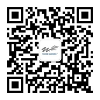Virtual Leadership
Leading by Remote Control (2011年7月8日)
We posted a blog in 2009 titled Leading by Remote Control in which we discussed the challenges of leading a remote team. Several readers commented that they found the title troublesome since it conjured up images of a leader controlling others or purposely pushing others’ buttons. These critiques had good merit. After all, engagement research tells us that employees don’t want to be controlled. And clinical psychology research tells us we all have buttons, yet none of us wants them to be pushed by others. With all of this criticism, does the Leading by Remote Control title have any legitimacy?
I say yes, for two reasons. Remote controls:
- Only work when focused on the TV’s sensor
- Stop working after a while, unless you replace or recharge the batteries
Here’s how this relates to effectively leading from a distance. First, even when the signals are calibrated, for most models, the remote must be physically focused on what’s important to the TV, the sensor. The same is true with leaders. They have to focus their influencing efforts on what’s important to the virtual team, including the kinds of recognition each member values and the behavioral styles preferred for feedback and direction. When the remote is focused on the person holding the remote, it almost never makes a connection with the TV and almost never successfully influences the TV to change. So when your remote team stops responding or performing in the manner you wish, ask yourself, “Am I focused on my team, or focused too much on what’s important to me?”
Second, just as remote controls stop working when their batteries are depleted, leaders sometimes become less effective at influencing virtual teams. When this happens, it is often because the leader has neglected self-care, and professional burnout shows up in the form of unnecessary edginess, impatience, or poor listening. Don’t lose hope! Just like batteries, a leader’s energy can be recharged. Here are some ways I recharge myself: Fast-paced 10-minute walk around the building; in bad weather, a brisk climb up and down the stairs; hot cup of tea; cold glass of ice water; a break to look at family photos from a favorite vacation; or searching Twitter for an article or video on a positive topic such as innovation or empathy. I always feel more energetic and better equipped for team-focused listening and influencing after one of these re-energizers.
What are your thoughts? In 2011 are there any legitimate analogies between TV remote controls and leaders coaching remote teams? Do you find you are sometimes more focused on yourself than on your team? Do your batteries need to be recharged so you will have the energy to listen with great attention? Share your thoughts so others can learn from your experiences.








 请填写下方的表格,免费订阅我们最新的研究和文章。
请填写下方的表格,免费订阅我们最新的研究和文章。






